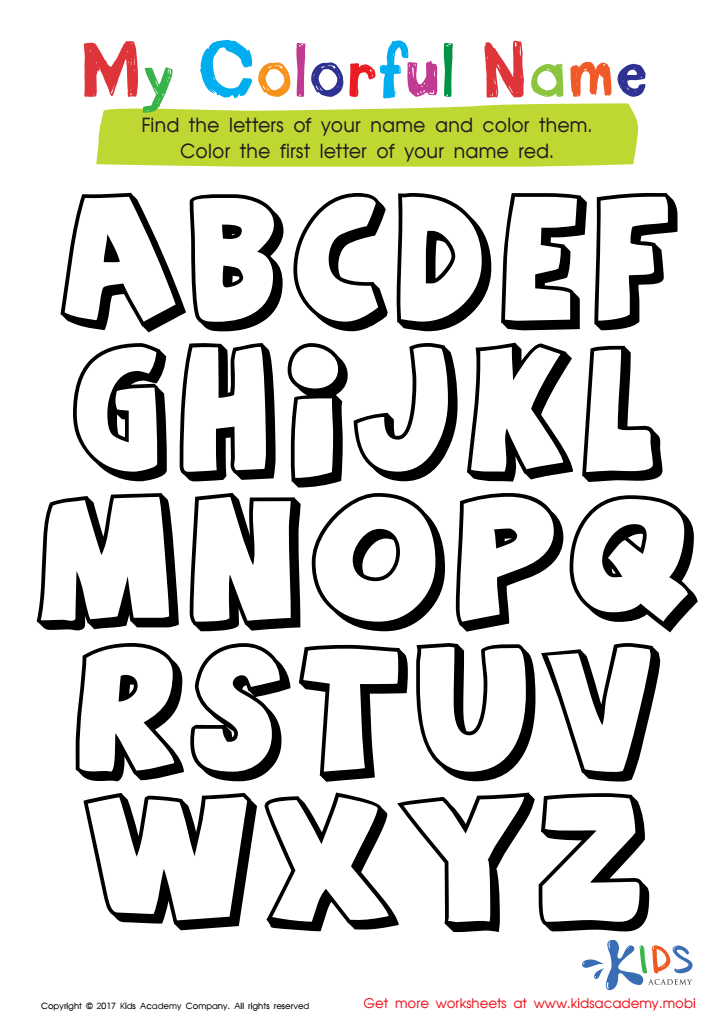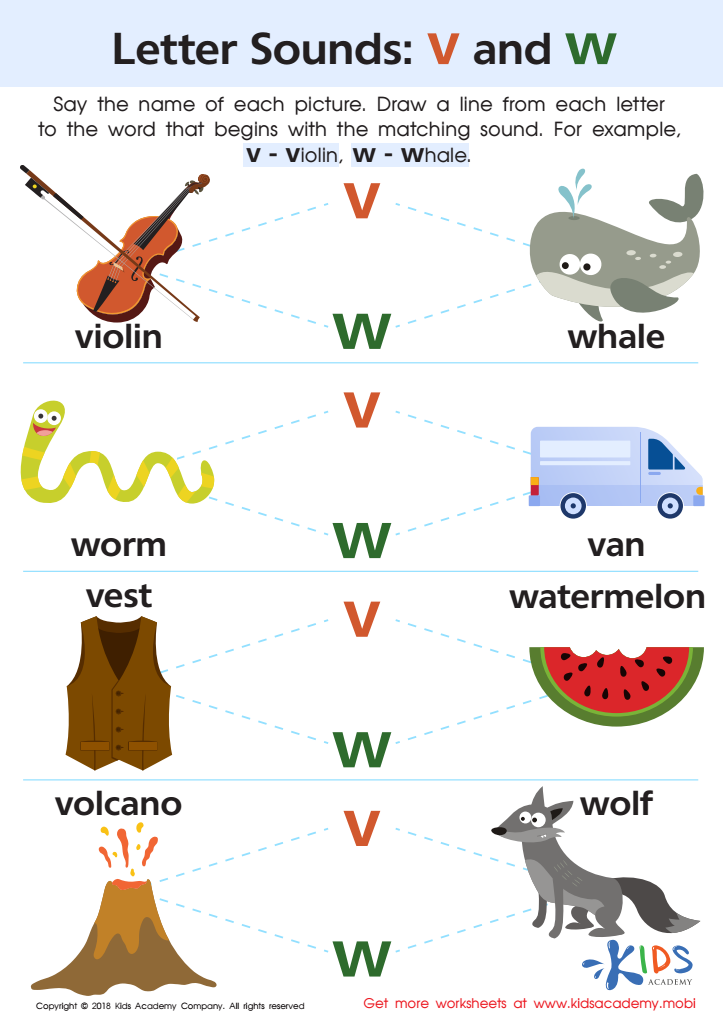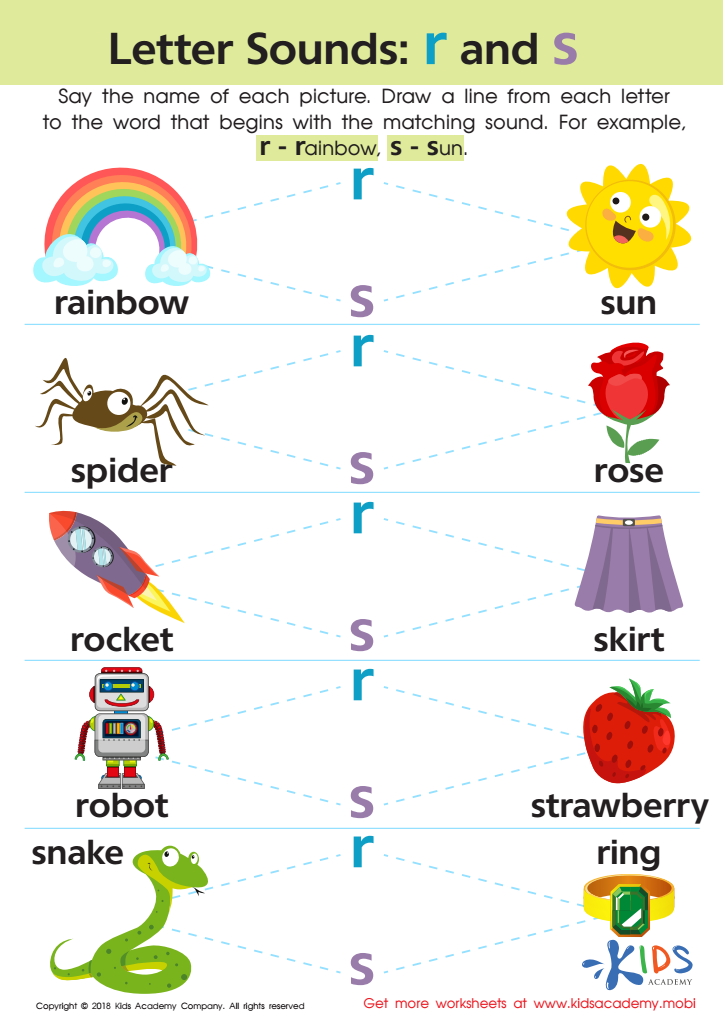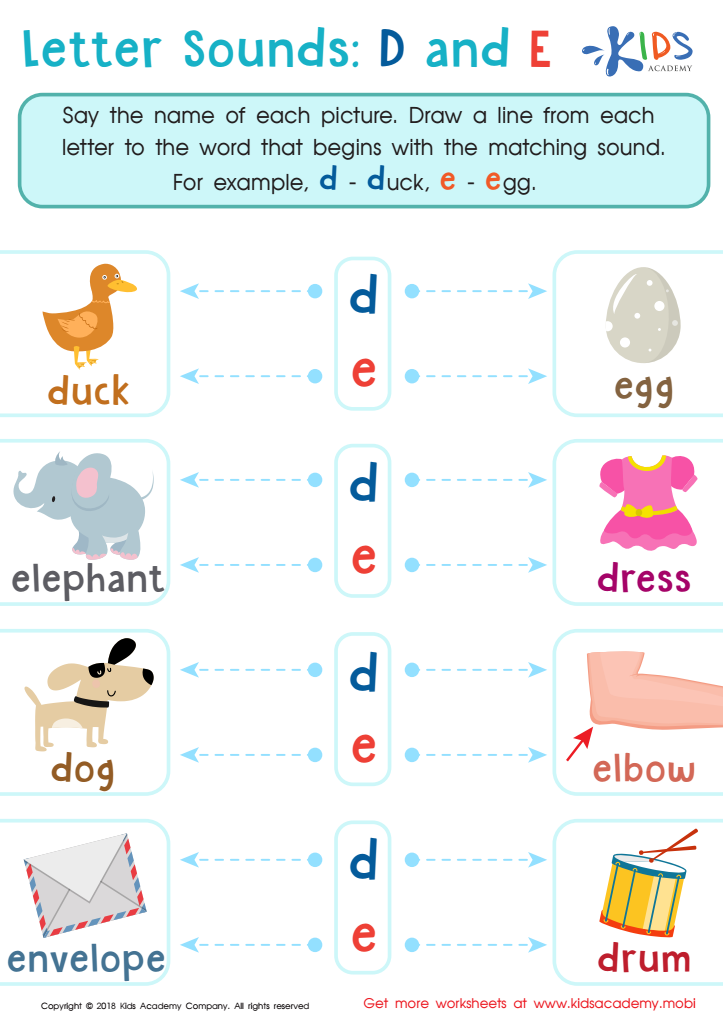Handwriting practice Phonics Worksheets for 3-Year-Olds
5 filtered results
-
From - To
Enhance your 3-year-old's early literacy skills with our engaging Handwriting Practice Phonics Worksheets. Designed to make learning fun, these printable worksheets blend the basics of phonics with handwriting practice, helping young children recognize letters and sounds while developing fine motor skills. Each worksheet features colorful illustrations and easy-to-follow activities tailored to preschoolers, ensuring they build a strong foundation for reading and writing. Perfect for parents and teachers, these resources support joyful, effective learning in a playful manner. Set your child on the path to early literacy success with our expertly crafted worksheets.


Letter P Sound Worksheet


My Colorful Name Worksheet


Letter V and W Sounds Worksheet


Letter R and S Sounds Worksheet


Letter D and E Sounds Worksheet
Handwriting practice and phonics instruction for 3-year-olds form foundational elements of early literacy development, and both parents and teachers should prioritize these activities. Firstly, handwriting practice is vital as it enhances fine motor skills, which are essential for a child's ability to perform everyday tasks with precision and coordination. Engaging in activities that develop hand-eye coordination, such as tracing shapes and letters, helps children gain control over their hand movements. This, in turn, facilitates more efficient writing as they grow.
Phonics instruction is crucial because it introduces young learners to the sounds that correspond to letters and groups of letters, building phonemic awareness. This skill is fundamental for decoding words, which is a key component of reading. When children understand the sound structure of words, their reading fluency and comprehension improve significantly. Early exposure to phonics can also promote a love for reading by making it easier and more enjoyable for children to engage with texts.
Incorporating handwriting and phonics into early learning experiences sets a robust foundation for academic success. By focusing on these skills early, parents and teachers can create an enriching learning environment that nurtures confident, proficient readers and writers. These foundational skills not only support future academic endeavors but also contribute to a child's overall cognitive development and confidence.

 Assign to My Students
Assign to My Students



















